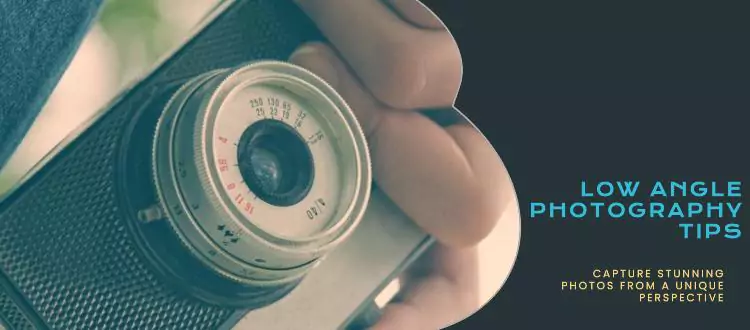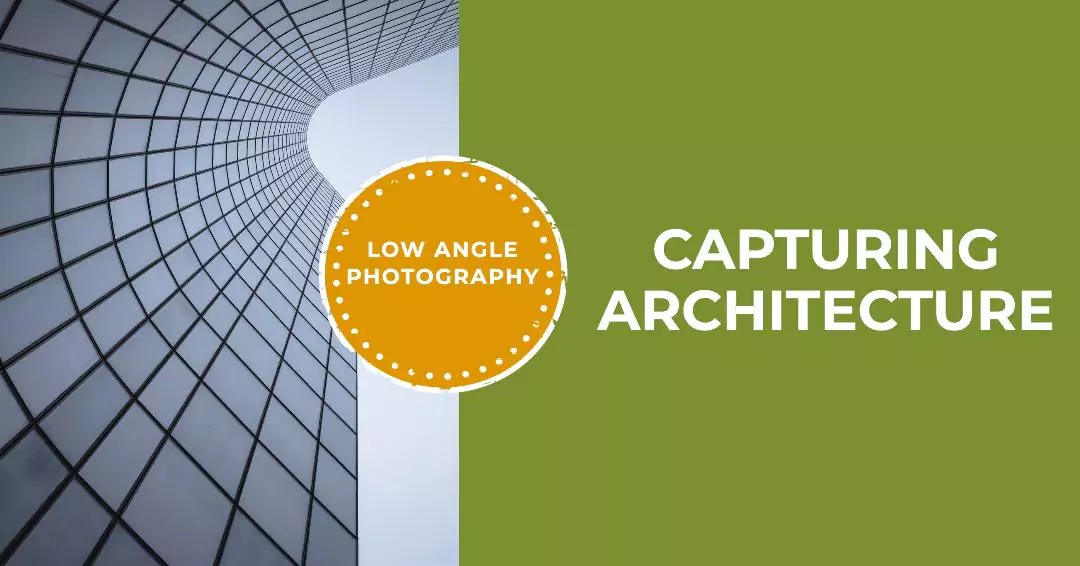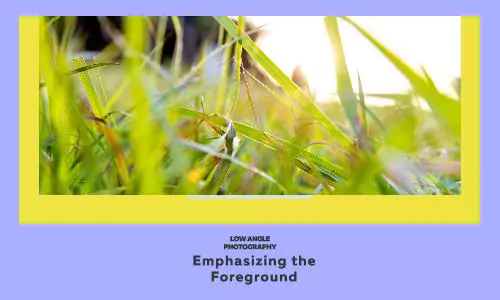Theodore Lowe, Ap #867-859
Sit Rd, Azusa New York
Find us here
Low Angle Photography Tips

Low angle photography can dramatically alter the impact of a photo, offering viewers a fresh perspective that emphasizes scale, significance, or dominance. Utilizing this technique allows photographers to capture the majesty of towering architecture, the vastness of open skies, or the imposing presence of statues and natural features.
By shooting from a lower vantage point, even the most familiar scenes gain a new dimension, often creating a more engaging and memorable image. This approach not only enhances visual appeal but also engages the audience, drawing them into a scene from an angle they may not typically see. To master this compelling photographic style, practice is essential, as well as a keen eye for framing and composition.
Essence Of Low Angle Photography
The Essence of Low Angle Photography opens a door to a world seen from the ant's perspective. It transforms the mundane into the majestic. By simply tilting the camera upwards, photographers breathe new life into familiar scenes. This technique not only elevates the subject but also immerses the viewer into the scene in a way traditional photography cannot.
Manipulating Perspective
Through Low Angle Photography, a sense of grandeur envelops the simplest of subjects. Trees reach dizzying heights, and buildings touch the sky. This dramatic shift in angle amplifies the perceived importance of the subject.
-
Make ants look like giants.
-
Give toys a storybook feel.
-
Turn puddles into oceans.
Creating Visual Impact
Low Angle Photography crafts unforgettable images. It challenges viewers to interpret the familiar in unfamiliar ways. The outcome is often a powerful photo that leaves a lasting impression.
|
Normal View |
Low Angle View |
|---|---|
|
Everyday sight |
Extraordinary scene |
|
Standard details |
Emphasized textures |
|
Common perspective |
New angle story |
By crouching down, photographers give power to the ground. They show the sky's vastness. A simple shift in camera position promises images that stick.
Choosing The Right Subject
Your camera angle can turn an ordinary scene into a stunning masterpiece. Low angle photography creates a unique perspective. But what should you capture to make your shots stand out? Let's explore some of the best subjects for low angle photography.
Capturing Architecture

Architectural features soar when you photograph them from below. Look for buildings with interesting designs or dynamic shapes. Historic monuments and modern skyscrapers both make excellent subjects. The key is in the details and lines that lead the viewer's eye skyward.
-
Seek out patterns and symmetry
-
Focus on the contrast against the sky
-
Include elements like arches and columns
Emphasizing The Foreground

Including a distinct foreground makes your low angle shots more intriguing. Search for textures or objects on the ground. Leaves, flowers, or even puddles can add depth and interest to your photo. This technique draws your viewer's eye through the scene.
-
Choose clear foreground elements
-
Use a wide angle lens for a deeper field
-
Position your camera close to the ground
Technical Aspects To Consider
Delving into the world of low angle photography unlocks a unique perspective. It's essential to master certain techniques to fully showcase the grand scale and interesting angles that this style offers. Focusing on sharpness and employing the right focusing techniques will elevate your images. Let's explore these critical technical aspects.
Camera Settings For Sharpness
Achieving sharp, crisp images in low angle photography requires particular attention to camera settings. Here are key adjustments to consider:
-
Aperture: Use a smaller aperture (higher f-number) to gain a wider depth of field.
-
ISO: Keep the ISO as low as possible to reduce noise.
-
Shutter Speed: A faster shutter speed prevents motion blur.
-
Tripod Use: A steady tripod can help maintain sharpness, especially in low-light conditions.
-
Lens Selection: Choose lenses known for their sharpness and minimal distortion.
Focusing Techniques
Mastering focus in low angle shots is crucial. Here are tips to help you:
-
Manual Focus: For precise control, switch to manual focus.
-
Focus Points: Select your focus points manually to ensure the subject is in sharp focus.
-
Hyperfocal Focusing: Use this technique to maximize sharpness from the foreground to the background.
-
Live View: Enable Live View mode to fine-tune the focus while seeing a magnified image.
By considering these technical details, you're well on your way to capturing stunning low angle photographs that tell a powerful story.
Compositional Techniques
Unique angles breathe life into photos. In low angle photography, composition is key. It's all about perspective. This angle makes everyday scenes dramatic. Now, let's explore how to use lines and symmetry, along with the rule of thirds, to make low angle shots stand out.
Leading Lines And Symmetry
Leading lines guide the eyes in photos. From low angles, these lines can seem more powerful. They pull viewers into the scene. Roads, paths, and fences work great for this. Symmetry creates balance that's pleasing. With a low angle, symmetry becomes more pronounced. Think reflections in water or the two identical sides of a building.
-
Find lines converging in the distance.
-
Look for natural mirrors like puddles.
-
Center the symmetrical subject in your frame.
The Rule Of Thirds At Low Angles
Divide your shot into nine squares. Place interesting elements at the intersections. At low angles, this might mean a flower in the bottom third. Or a pebble that seems giant. The sky and ground meet at the top and bottom thirds, creating depth. Your photo feels well-balanced and dynamic.
|
Bottom Third: |
Giant pebbles or tiny flowers |
|
Middle Third: |
Horizon or a crawling insect's trail |
|
Top Third: |
Where sky dominates, clouds dance |
Creative Use Of Environment
Low angle photography transforms how viewers see the world. It offers a fresh perspective that highlights the importance of the environment. By shifting how photographers engage with their surroundings, incredible scenes emerge. These tips will guide you through making the most of various environmental elements.
Incorporating Weather
Weather plays a crucial role in setting the mood. Pay attention to the sky. Cloud patterns can dramatize your shot. Looking for reflections after rain can create unique perspectives. Always safeguard your camera against the elements. Try capturing the contrast of seasons using low angles to emphasize environmental changes.
-
Capture puddle reflections
-
Use snow for minimalistic aesthetics
-
Photograph fallen leaves for a textured foreground
Utilizing Light And Shadows
Light and shadow define the depth of your photo. Early mornings or late afternoons provide long shadows. Use shadows to lead the eye through your composition. Experiment with the sun's position for backlight or side-light effects. Incorporate silhouettes to add mystery. Here, contrast is your friend, turning ordinary scenes into masterpieces.
-
Shoot during the golden or blue hours
-
Experiment with harsh midday shadows
-
Find silhouettes for strong subject definition
Post-processing Tips
After capturing those stunning low angle shots, post-processing becomes the magic wand. It transforms good photos into great ones. With the right tweaks and adjustments, your low angle images will truly stand out. Follow these post-processing tips to enhance your photography.
Adjusting Distortion
Lens distortion can warp your low angle photos. Tools like Photoshop and Lightroom fix this. Use the Lens Correction feature. Sometimes, manual adjustment is necessary. Try these steps:
-
Open your editing tool.
-
Select the
Lens Correctionoption. -
Choose your camera model for automatic correction.
-
If needed, use sliders to adjust perspective.
Enhancing Dramatic Skies
A dramatic sky takes your photo from good to great. Use adjustments for contrast and color. Follow these simple steps:
-
Boost Contrast to make the clouds pop.
-
Adjust Saturation and Vibrance for richer colors.
-
Try a Graduated Filter to balance the sky with the foreground.
-
Don't overdo it. Keep skies looking natural.
Conclusion
Embracing low angle photography can transform your visual storytelling. Remember, it's about exploring unique perspectives and engaging your audience. Keep angles varied, experiment consistently, and let creativity be your guide. Your portfolio will thank you for the fresh, dynamic shots.
Related blog posts
Creating a Kid-Friendly Studio Setup: Ultimate Guide
Imagine capturing the pure joy and energy of children in your clothing photography. Sounds exciting, right?


